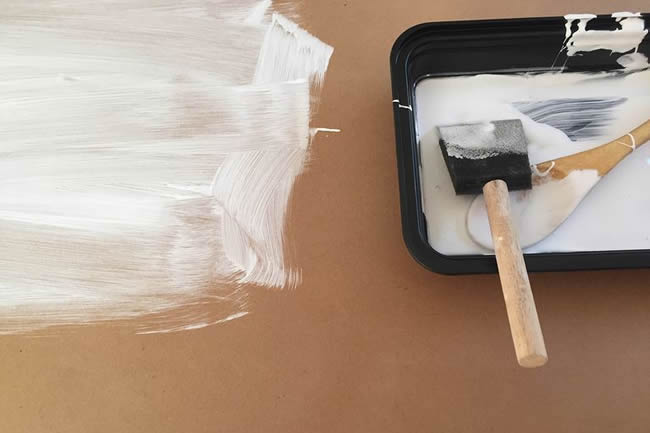
Lisa Marder
Canvas is perceived by many people to be the best support for painting, but hardboard (or wood) should not be shunned. In fact, some would argue that it is a superior support to canvas for oils because, unlike canvas which is flexible, wood is rigid and this helps to prevent cracks in the oil paint.
Hardboard is the term used for a board or panel made from a hardwood such as oak, cedar, birch, walnut, or mahogany. Softwoods like pine are not suitable for painting because they contain excess resins and they tend to crack.
These terms tend to be used interchangeably when people talk about painting on a board or wood panel rather than canvas.
Hardboard or wood can be relatively inexpensive. The surface is more rigid, so there tends to be less cracking in the painting as it dries and ages. While it is heavier, if you are doing work smaller than 18"x24" (45x60 cm), the weight is not much of a problem.
The experience of painting on hardboard is distinctly different than that of painting on canvas, and many painters prefer this. The surface is quite smooth, and the paint glides onto the surface and is easy to move around.
If a board is not primed correctly, there is a risk that acid or oils may leach in from the board, yellowing the painting. Acrylic gesso is regarded as an effective barrier against this.
Also, larger pieces can weigh quite a bit. They will bend or bow inward so you should take the time to add reinforcement to a frame or bracing struts (tips below).
Most places that sell wood sell hardboard. It generally comes in 1/8" and 1/4" thicknesses, in tempered and untempered versions.
Hardboard is easy to cut to the size you want using a saw, particularly an electric circular saw. If you plan ahead, you can get a number of panels from a single large board and have a variety of sizes to paint on.
Tip: No saw? The lumber yard you buy the board from will likely offer a cutting service, too.
There is typically a smooth side and a side with a weave-like finish which is very coarse. You can paint on either side; it's a matter of personal preference. If you choose the shiny side, it should be lightly sanded, so the primer adheres properly.
It is generally recommended that you give hardboard three coats of gesso and a light sanding between each coat. It can produce a surface with the texture of paper or one that's as smooth as glass.
Priming the back and sides will help seal the board from moisture in the air.
A proper coating of gesso is important. Paint, even when it looks opaque, is affected by what is underneath. If there are at least three coats of white underneath your painting, your colors will be that much brighter. It is also an excellent way to achieve ‘light’ in your paintings.
If you like the feel and look of canvas, you can combine it with hardwood to make a canvas board. It is very easy to do and gives you the texture of canvas with the rigidity of hardboard.
If you are painting on hardboard over 18 inches (45.72 cm), you will want to "cradle" the panel (it's not a bad idea for smaller boards, but not necessary). This should be done prior to painting and will prevent the board from warping both while painting and over time.
Cradling is, essentially, building a support frame for the back of your hardboard painting. It not only prevents warping but brings you painting away from the wall and gives you a place to attach a wire hanger.
Anyone with the most basic skills in woodworking can build this support frame, and it doesn't have to look perfect because it's on the back of the painting. If you have built your own canvas stretcher or outer frame, it is a very easy project.
If you don't know how to work with wood, it's a great place to begin and a skill that you'll find useful. You will find that building your own canvas and hardboard support saves money as well.
To build the support frame, you will need 1"x2" boards, wood glue, nails or screws, and basic tools like a hammer or screw gun and a saw. There are many instructional videos on YouTube that will show you step by step instructions for the build.
If you did not cradle your hardboard and your painting begins to warp, all is not lost. You do need to be careful when fixing it and there are a few things you can try.
